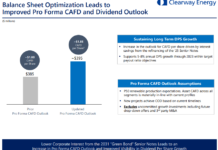Investors looking for income have long relied on the stocks of electric utilities. Naturally cash generative utility companies have a history of generous dividend payout policies. However, for those investors who have a concern about sustainability or climate change, even utilities with the highest dividend yields may not be appealing.
We looked at a selection of nine utility companies with mixed achievements in terms of the percentage of renewable energy sources found in their retail sales of electricity. The intensity of renewable energy in utility portfolios varies considerably across the industry. Many utilities are grappling with legacy coal and oil infrastructure. Others are not favored by the crops, sun, wind or geothermal deposits that are supportive of alternative power generation.
Renewable energy as a percentage of retail sales as shown in the table below is based on company reports for fiscal year 2017. Electricity generated using natural gas is excluded. Comparisons within the selected group reveal that incorporating renewable energy technologies does not suppress performance, at least in terms of cash flow generation.
| DIVIDENDS FROM ENERGY ALTERNATIVES | ||||||
| Company Name | Symbol | Renewable Energy as % of Retail Sales | Forward Dividend Yield | Sales-to-Cash Conversion Rate | Debt-to-Equity Ratio | Payout Ratio |
| Sempra Energy | SRE | 48% | 3.2% | 32.3% | 129.6 | 325.7% |
| Alliant Energy | LNT | 39% | 3.4% | 29.1% | 120.5 | 63.3% |
| PG&E Corporation | PGE | 33% | 3.6% | 34.9% | 98.3 | 48.3% |
| Edison International | EIX | 32% | 3.9% | 29.1% | 104.5 | 129.8% |
| Xcel Energy | XEL | 29% | 3.4% | 27.5% | 137.9 | 64.% |
| Ameren Corp. | AEE | 23% | 3.3% | 35.5% | 114.9 | 83.1% |
| Exelon Corp. | EXC | 23% | 3.6% | 22.3% | 110.7 | 33.0% |
| OGE Energy | OGE | 8% | 4.2% | 34.7% | 82.3 | 30.2% |
| Pinnacle West | PNW | 8% | 3.6% | 31.4% | 96.7 | 61.2% |
Dividend yields are impressive in the small sample. Sticking with a strong dividend policy is yet another story. All nine companies in the sample have strong sales-to-cash conversion rates, suggesting good support for capital investment as well as dividend payments.
Room to borrow is also a means to keep bills paid and maintain dividend payouts even during periods of weak profits. Average debt-to-equity ratio in the sample is 110.6, implying nearly equal use of debt as equity capital. The average for the industry as a whole is approximately 130.0. This group could lay on more debt without appearing to be taking on inordinate risk.
It is ill advised to payout most or all of a company’s earnings. A standard maximum payout ratio might be 75%. Three companies within the sample exceed this level at least for the most recent fiscal year. It would be worthwhile to look at the payout ratio over time rather than just the recent year. If the average payout ratio over the last three to five years appears excessive it puts sustainability of the dividend into question.
The winner in the sample appears to be OGE Energy (OGE: NYSE). Renewable energy has only penetrated 8% of OGE’s portfolio. Still the company has been successful in converting 34.7% of its sales to operating cash flow. There is room for more leverage given the current debt-to-equity ratio of 82.3. Only 32.3% of earnings are being paid out as dividends, leaving two third of earnings for reinvestment into OGE’s business and that could include investment in renewable energy technology and infrastructure. At the current price level a shareholder gets a yield of 4.2%.
PG&E Corporation (PGE: NYSE) is another strong candidate with a dividend yield of 3.6%. The company is also tops in converting sales to operating cash flow. The debt-to-equity ratio well below industry average and the payout ratio is modest. Investors with a green stripe down their back will be pleased to know PG&E has bulked up to 33% renewable energy in its retail sales, putting it among the greenest of utility dividends.
Neither the author of the Small Cap Strategist web log, Crystal Equity Research nor its affiliates have a beneficial interest in the companies mentioned herein. OLED was previously included in the coverage group of Crystal Equity Research. Coverage was concluded with a Sell rating.








